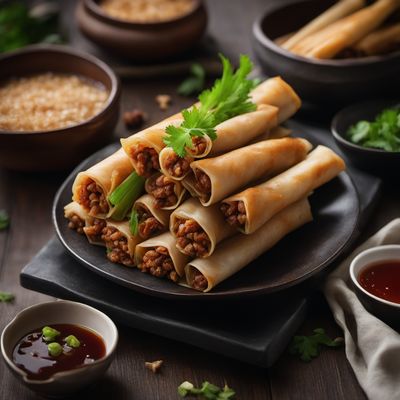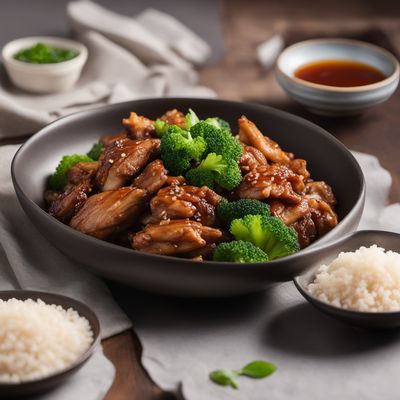
Ingredient
Chinese water chestnut
The Crispy Gem of Asia
Chinese water chestnuts are small, bulbous tubers with a knobby exterior and a crisp, juicy flesh. They have a mild, slightly sweet flavor and a water chestnut-like texture, making them a popular ingredient in Asian cuisines. These tubers are often used in stir-fries, salads, and soups, and they can also be enjoyed raw for their refreshing crunch.
Origins and history
Chinese water chestnuts have a long history in Asian cuisines, particularly in China and Southeast Asian countries. They are believed to have originated in China and have been cultivated for thousands of years. Chinese water chestnuts are highly valued for their culinary versatility and unique texture.
Nutritional information
Chinese water chestnuts are low in calories and fat, making them a healthy addition to meals. They are a good source of dietary fiber, potassium, and vitamin B6. These tubers also contain antioxidants that contribute to overall well-being.
Allergens
There are no known allergens associated with Chinese water chestnuts.
How to select
When selecting Chinese water chestnuts, look for firm tubers with a smooth, unblemished skin. Avoid any signs of mold or soft spots. The tubers should feel heavy for their size, indicating freshness. Additionally, choose water chestnuts with a white or cream-colored flesh for the best flavor and texture.
Storage recommendations
To maintain freshness, store Chinese water chestnuts in the refrigerator. Keep them in a perforated plastic bag or a container with damp paper towels to prevent them from drying out. Use within a week for the best quality.
How to produce
Chinese water chestnuts can be grown in a home garden by planting the tubers in a container or a pond with shallow water. They require warm temperatures and plenty of sunlight. Harvest the tubers when they are mature and have developed a crisp texture.
Preparation tips
To prepare Chinese water chestnuts, peel off the outer skin using a knife or a vegetable peeler. Rinse them under cold water to remove any dirt or debris. Chinese water chestnuts can be enjoyed raw, sliced and added to salads for a refreshing crunch. They can also be stir-fried with other vegetables or used in soups and stews for their unique texture.
Substitutions
Jicama can be used as a substitute for Chinese water chestnuts, offering a similar crisp texture and mild flavor. However, jicama has a slightly sweeter taste. N/A
Culinary uses
Chinese water chestnuts are commonly used in stir-fries, salads, and soups in Asian cuisines. They add a refreshing crunch and a unique texture to dishes. They are also used in traditional Chinese desserts and sweet soups.
Availability
Chinese water chestnuts are commonly available and cultivated in China, Southeast Asian countries, and other regions with a similar climate. They are also imported and sold in Asian grocery stores worldwide.
More ingredients from this category
Recipes using Chinese water chestnut » Browse all

Huaiyang-style Stuffed Tuna
Silken Tuna Delight: Huaiyang-style Stuffed Tuna

Guangxi-style Stuffed Beef Roll
Savory Beef Delight: Guangxi-style Stuffed Beef Roll

Taiwanese-style Dim Sum
Delightful Taiwanese Dim Sum: A Fusion of Flavors

Lumpiang Shanghai with a Twist
Crispy Pork Spring Rolls with a Flavorful Twist

Zhejiang-style Prežganka Soup
Silky Zhejiang Soup: A Fusion of Slovenian and Chinese Flavors

Shanghai-style Stuffed Chicken
Savory Shanghai Chicken Parcel

Stuffed Goose Neck with Jiangxi Twist
Jiangxi-inspired Stuffed Goose Neck: A Fusion of German and Chinese Flavors

Manchu-style Torta Envinada
Savory Manchu Delight: Torta Envinada with a Twist

Thai Golden Cups
Crispy Delights: Thai Golden Cups

Cantonese-style Vegetable Fritters
Crispy Cantonese Veggie Delights

Teochew-style Koloocheh
Savoury Teochew Delight: Koloocheh with a Twist

Dim Sum
Delightful Dim Sum: A Taste of Authentic Chinese Cuisine